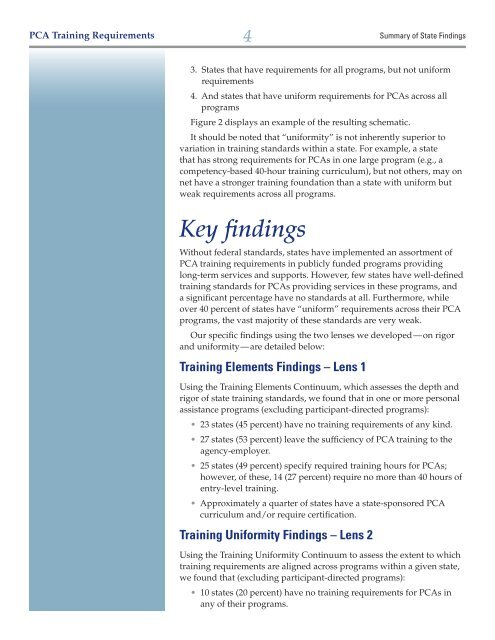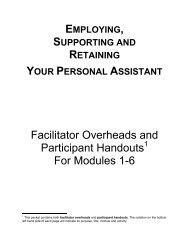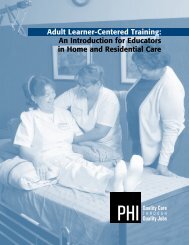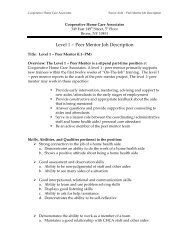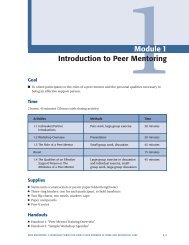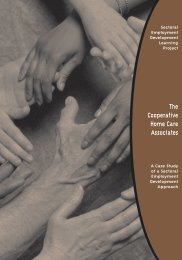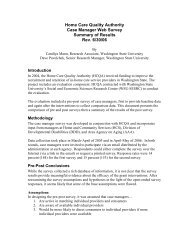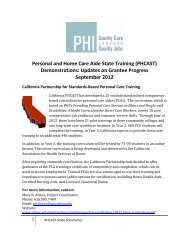Personal Care Aide Training Requirements Summary of State ... - PHI
Personal Care Aide Training Requirements Summary of State ... - PHI
Personal Care Aide Training Requirements Summary of State ... - PHI
- No tags were found...
Create successful ePaper yourself
Turn your PDF publications into a flip-book with our unique Google optimized e-Paper software.
PCA <strong>Training</strong> <strong>Requirements</strong> 4<strong>Summary</strong> <strong>of</strong> <strong>State</strong> Findings3. <strong>State</strong>s that have requirements for all programs, but not uniformrequirements4. And states that have uniform requirements for PCAs across allprogramsFigure 2 displays an example <strong>of</strong> the resulting schematic.It should be noted that “uniformity” is not inherently superior tovariation in training standards within a state. For example, a statethat has strong requirements for PCAs in one large program (e.g., acompetency-based 40-hour training curriculum), but not others, may onnet have a stronger training foundation than a state with uniform butweak requirements across all programs.Key findingsWithout federal standards, states have implemented an assortment <strong>of</strong>PCA training requirements in publicly funded programs providinglong-term services and supports. However, few states have well-definedtraining standards for PCAs providing services in these programs, anda significant percentage have no standards at all. Furthermore, whileover 40 percent <strong>of</strong> states have “uniform” requirements across their PCAprograms, the vast majority <strong>of</strong> these standards are very weak.Our specific findings using the two lenses we developed—on rigorand uniformity—are detailed below:<strong>Training</strong> Elements Findings – Lens 1Using the <strong>Training</strong> Elements Continuum, which assesses the depth andrigor <strong>of</strong> state training standards, we found that in one or more personalassistance programs (excluding participant-directed programs):• 23 states (45 percent) have no training requirements <strong>of</strong> any kind.• 27 states (53 percent) leave the sufficiency <strong>of</strong> PCA training to theagency-employer.• 25 states (49 percent) specify required training hours for PCAs;however, <strong>of</strong> these, 14 (27 percent) require no more than 40 hours <strong>of</strong>entry-level training.• Approximately a quarter <strong>of</strong> states have a state-sponsored PCAcurriculum and/or require certification.<strong>Training</strong> Uniformity Findings – Lens 2Using the <strong>Training</strong> Uniformity Continuum to assess the extent to whichtraining requirements are aligned across programs within a given state,we found that (excluding participant-directed programs):• 10 states (20 percent) have no training requirements for PCAs inany <strong>of</strong> their programs.


